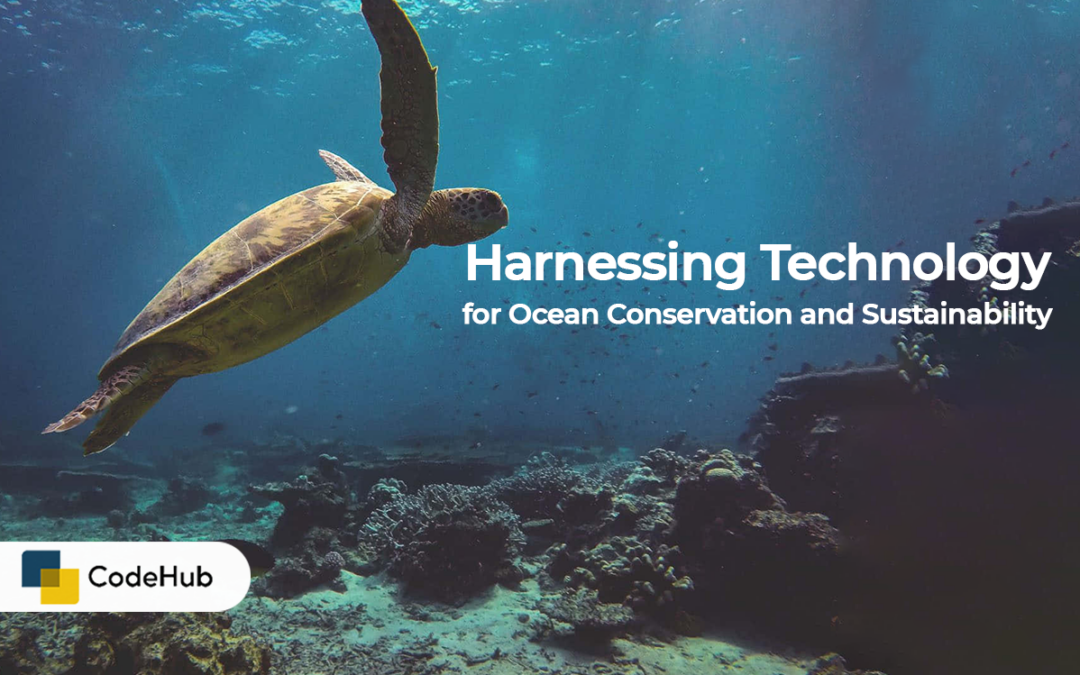The health of our oceans is critical to the well-being of our planet and all life it sustains. However, the world’s oceans face a myriad of threats, including pollution, overfishing, habitat destruction, and climate change. To address these challenges and promote ocean conservation and sustainability, innovative tech solutions are playing an increasingly vital role. Let’s explore some of the groundbreaking technologies and initiatives that are helping to protect and preserve our oceans.
1. Marine Drones and Autonomous Vehicles
Marine drones and autonomous vehicles equipped with advanced sensors and imaging technology are revolutionizing ocean monitoring and research. These unmanned vehicles can explore remote and inaccessible areas of the ocean, collect data on water quality, marine life, and habitat health, and monitor for illegal activities such as poaching and pollution. They provide valuable insights into ocean ecosystems, helping scientists and conservationists make informed decisions and take proactive measures to protect marine biodiversity.
2. Remote Sensing and Satellite Imaging
Remote sensing and satellite imaging technologies enable scientists to monitor large-scale changes in the ocean environment, such as sea surface temperature, ocean currents, and phytoplankton distribution. These satellite-based observations provide valuable data for tracking oceanographic phenomena, predicting weather patterns, and assessing the impacts of climate change on marine ecosystems. Remote sensing helps identify areas of concern and guide conservation efforts, such as the establishment of marine protected areas and the implementation of sustainable fisheries management practices.
3. Ocean Cleanup Technologies
Ocean cleanup technologies aim to remove plastic pollution and debris from the ocean, preventing harm to marine life and ecosystems. Innovative solutions such as ocean cleanup arrays, floating barriers, and autonomous trash-collecting vessels are being developed to capture and remove plastic waste from the ocean surface. Additionally, initiatives focusing on the development of biodegradable materials and alternative packaging solutions help reduce the amount of plastic entering the ocean in the first place, promoting a circular economy and sustainable consumption patterns.
4. Coral Reef Monitoring and Restoration
Coral reefs are among the most diverse and productive ecosystems on the planet, but they are increasingly threatened by climate change, pollution, and overfishing. Tech solutions such as underwater drones, 3D mapping, and coral reef monitoring networks enable scientists to assess the health of coral reefs, monitor coral bleaching events, and identify areas in need of restoration. Furthermore, innovative techniques such as coral reef transplantation, assisted evolution, and coral gardening are being employed to restore damaged reefs and enhance their resilience to environmental stressors.
5. Sustainable Fishing Technologies
Sustainable fishing technologies and practices help minimize the impact of fishing activities on marine ecosystems and promote the long-term viability of fish stocks. Innovations such as selective fishing gear, real-time monitoring systems, and fishery management software enable fishermen to target specific species, reduce bycatch and discards, and comply with fishing regulations more effectively. Additionally, the adoption of sustainable fishing practices such as catch-and-release, habitat protection, and ecosystem-based management contributes to the conservation of marine biodiversity and the sustainability of fisheries.
6. Citizen Science and Crowdsourcing
Citizen science and crowdsourcing platforms engage the public in ocean conservation efforts by enabling individuals to contribute data, observations, and insights to scientific research projects. Platforms such as iNaturalist, eBird, and Marine Debris Tracker empower citizen scientists to collect and share information about marine biodiversity, species distribution, and pollution hotspots. By harnessing the collective power of volunteers and enthusiasts, citizen science initiatives generate valuable data for conservation planning and decision-making, while also raising awareness and fostering community engagement in ocean conservation efforts.
Conclusion
From marine drones and satellite imaging to coral reef restoration and sustainable fishing technologies, tech solutions are driving innovation and progress in ocean conservation and sustainability. By leveraging the power of technology, collaboration, and innovation, we can protect and preserve our oceans for future generations, ensuring a healthy and resilient blue planet for all life forms to thrive. Together, let’s continue to explore, innovate, and take action to safeguard our oceans and create a more sustainable and equitable world.

